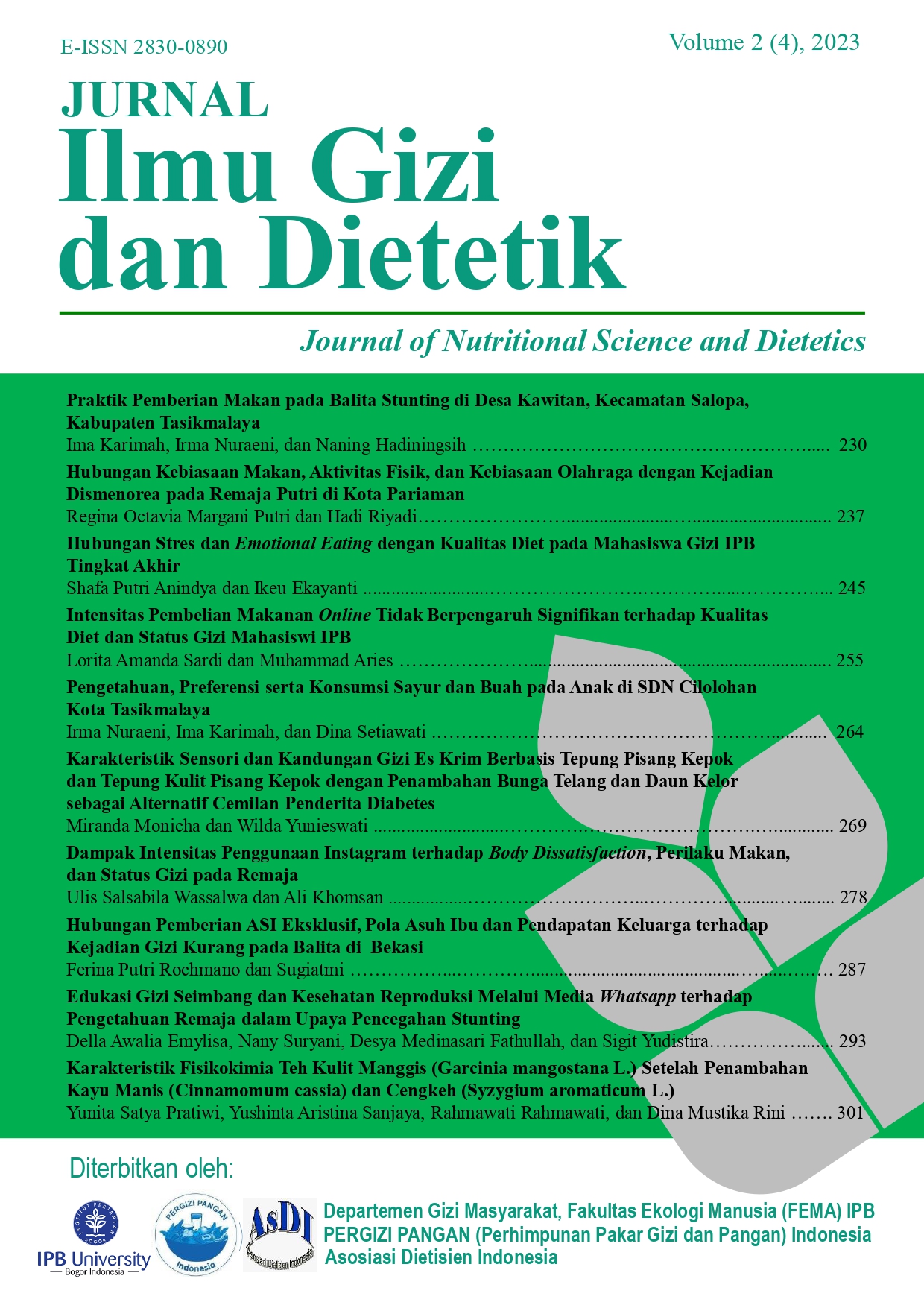Hubungan Kebiasaan Makan, Aktivitas Fisik, dan Kebiasaan Olahraga dengan Kejadian Dismenorea pada Remaja Putri di Kota Pariaman The Relationship between Eating Habits, Physical Activity, and Exercise Habits with the Incidence of Dysmenorrhea in Female Adolescents at Pariaman City
Abstract
Female adolescents experience biological development marked by menstruation which can cause various problems including dysmenorrhea. This study aims to analyze the relationship between eating habits, physical activity, and exercise habits with the incidence of dysmenorrhea in female adolescents in Pariaman City. The research was conducted in December 2022 at SMAN 1 Pariaman City on 94 subjects with a cross-sectional study design. Subjects were selected purposively by collecting primary data through questionnaires and interviews. Adequacy levels of energy (33%) and fat (52.1%) are still classified as severe deficits, while protein (36.2%) and carbohydrates (29.8%) are classified as excess. Meanwhile, the level of adequacy of micronutrients, namely calcium (56.4%), iron (92.6%), and vitamin C (70.2%) was classified as sufficient. The physical activity of most of the subjects was in the moderate category (64.9%). As many as 46.8% of subjects often exercise with a frequency of 1 time a week (40.9%). Most of the subject’s exercise duration was classified as sufficient (63.6%). The results of the analysis showed that there was no significant relationship between the level of adequacy of energy, fat, carbohydrates, calcium, iron, vitamin C, physical activity, and exercise habits with the incidence of dysmenorrhea (p>0.05). However, the level of protein adequacy with the incidence of dysmenorrhea showed a significant relationship (p=0.027).

